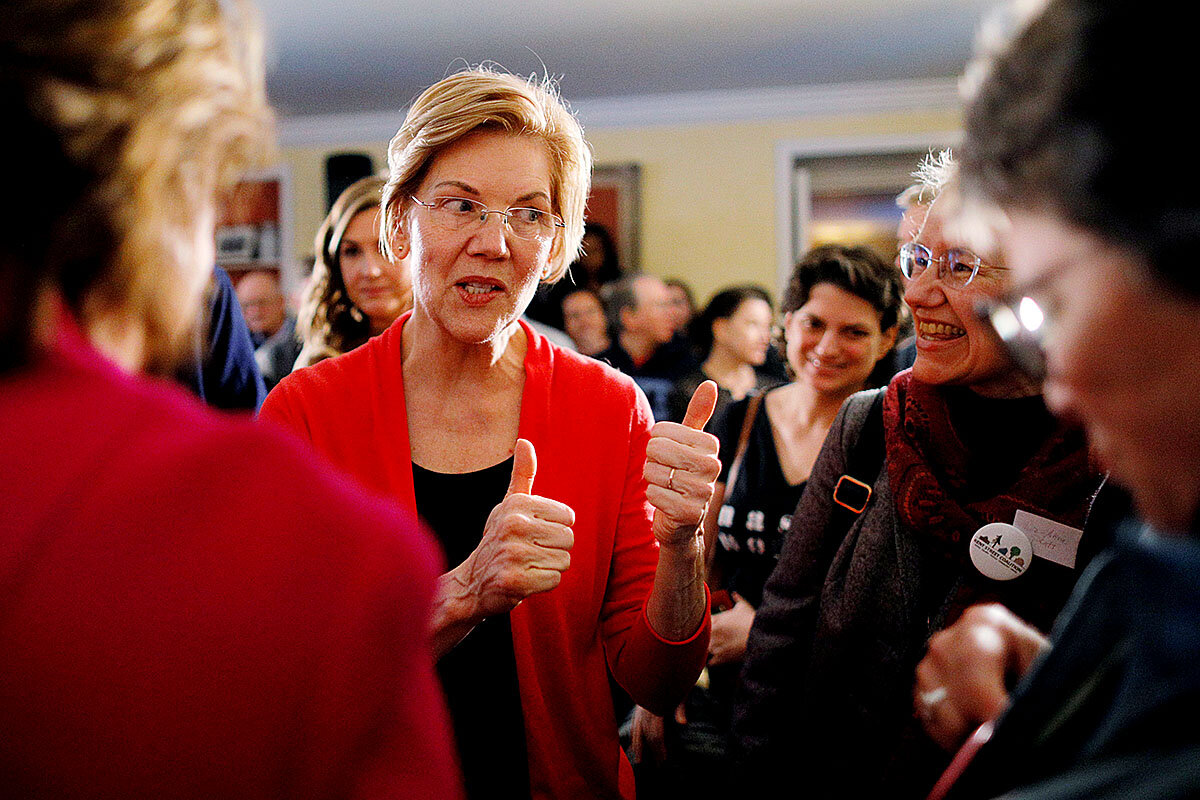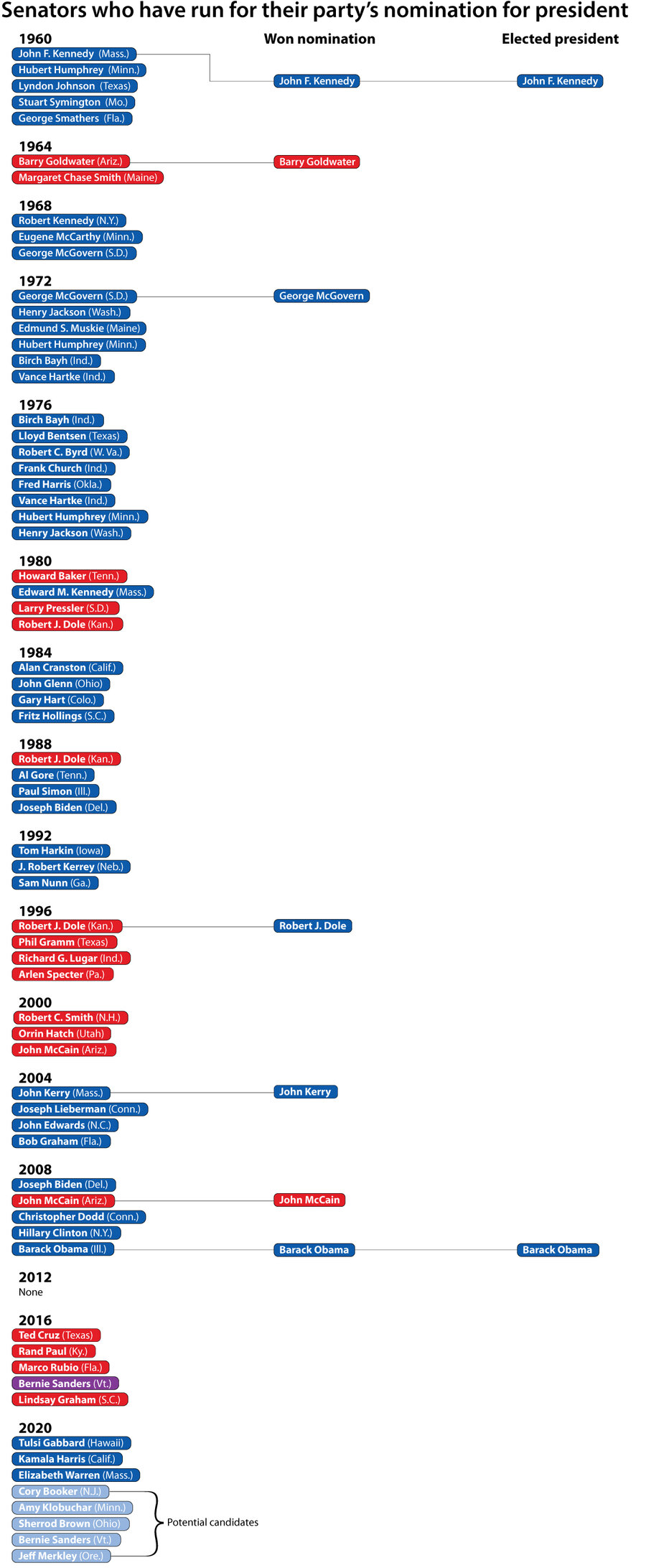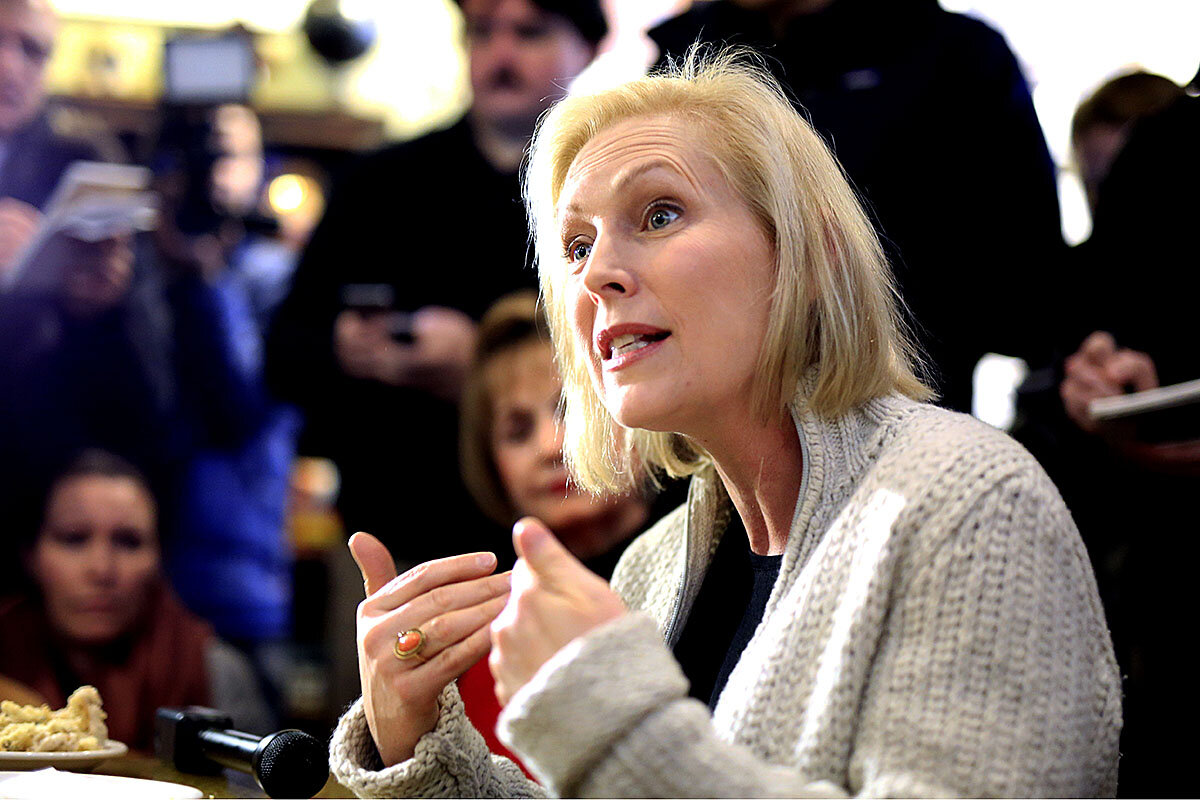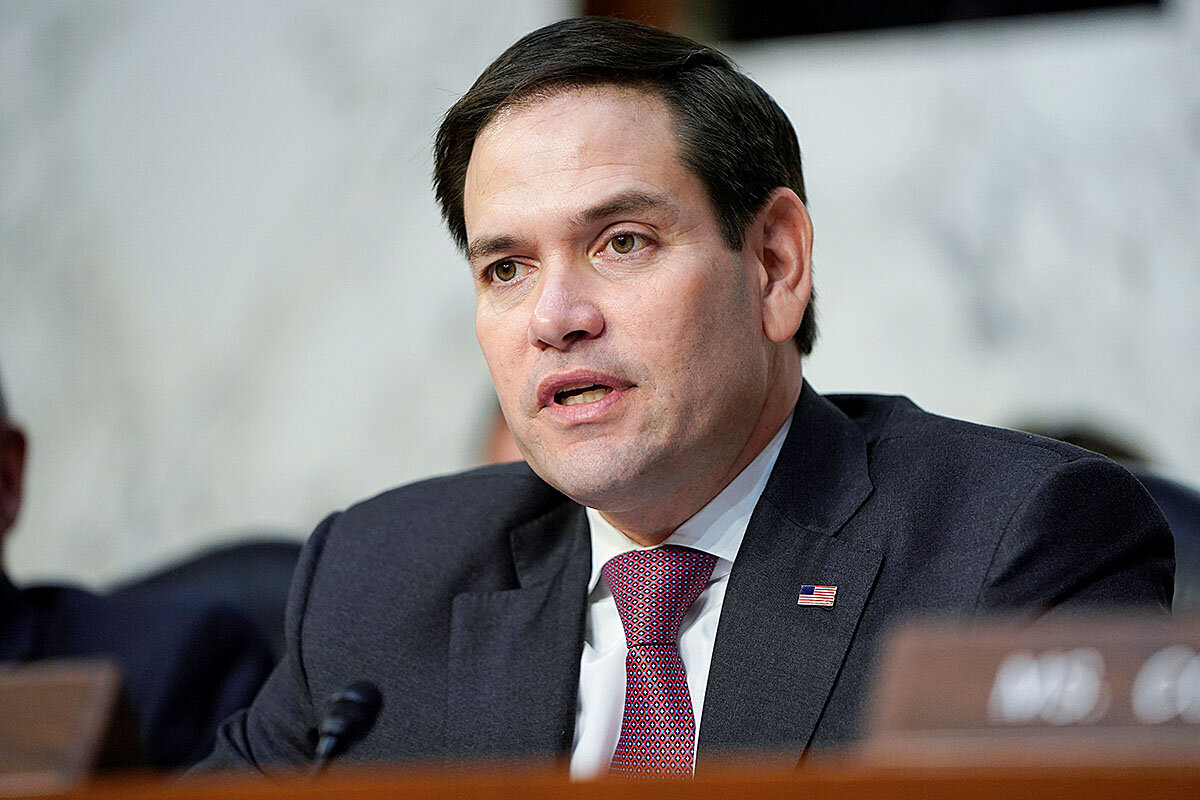Lots of senators are eyeing the White House. But few have ever made it there.
Loading...
| Washington
When a young US senator named Barack Obama announced he was going to run for president in 2007, pundits proclaimed the odds were against him.
He was a Washington rookie, at the time having served only two years in the Senate, up against Democratic powerhouses like Hillary Clinton and Joe Biden for the nomination. He lacked executive experience. Plus, no sitting senator had won the White House since John F. Kennedy in 1960.
President Obama beat the odds. Now, as 2020 looms, a slew of Democrats are looking to do the same, with as many as eight senators angling toward the other end of Pennsylvania Avenue.
Why We Wrote This
The 2020 campaign could tie the record for sitting senators running for president. And while history points to a steep climb, many see a roadmap in President Barack Obama’s successful campaign.
Sen. Kamala Harris of California announced her bid last week – the third to make it official in the past month, after Sens. Elizabeth Warren of Massachusetts and Kirsten Gillibrand of New York. Other senators poised for possible campaigns include Cory Booker of New Jersey, Bernie Sanders of Vermont, Sherrod Brown of Ohio, Amy Klobuchar of Minnesota, and Jeff Merkley of Oregon.
If all of them wind up running, the 2020 slate would tie the 1976 presidential cycle for the record number of sitting senators to declare candidacies.
History would say they face an uphill climb. In ’76, despite all the senators vying for the nomination, the Democratic Party wound up tapping a governor, Jimmy Carter of Georgia. Before President Kennedy, the only sitting senator to make the jump to the Oval Office was Warren G. Harding – in 1920.
Today’s senators, however, have advantages their predecessors didn’t. It’s less important to be physically present in Washington than it used to be – and given the current state of gridlock, there’s less legislating going on anyway. Modern technology also makes it easier for candidates and their staff to stay connected while jetting around the country. While there’s often strong public antipathy toward “creatures of Washington,” Obama showed that newer senators can benefit from the stature and media attention the office brings without coming across as a party insider or having to defend a long trail of controversial votes.
Then there’s the timing. With a supercharged base of voters dead set on ousting the incumbent and no obvious frontrunner bigfooting the competition, the 2020 cycle is especially alluring to anyone who’s been harboring White House hopes. And it’s a good bet that many, if not most, senators have had moments when they’ve looked in the mirror and seen presidential material.
“They look at whoever is president, and they say, ‘I could do the job just as well,’ ” says Senate historian emeritus Don Ritchie. “Ambition is how the political system generates new talent. It drives people to do great things.”
‘You can’t be in two places at once’
After Sen. Birch Bayh (D) of Indiana decided to run for president in the fall of 1975, scheduling quickly became a huge challenge, says Jay Berman, his then-chief of staff. Not only did the Senate meet almost every day back then, but there was also no internet, no cellphones – no easy way to stay in touch with staff on the Hill when the candidate was on the road, or mingle with potential voters when he was in Washington.
The campaign team wanted folks to feel as if the senator was still “a Hoosier, that he had not grown too big for his britches,” Mr. Berman recalls. “But you had to be someplace to make an impression.” Bayh also struggled to support his wife, Marvella, who was fighting cancer during the campaign. In the end, he couldn’t drum up enough support in Iowa and New Hampshire and withdrew his candidacy in March of 1976.
Juggling a nationwide campaign with Senate duties is still grueling, especially for those in leadership. Former Sen. Bob Dole (R) of Kansas managed to win the GOP nomination in 1996 while also serving as majority leader. But he resigned his “day job” in June of that year to focus on his race against President Bill Clinton. (Not that it did much good, as Senator Dole lost to President Clinton by 220 electoral votes.)
“You can’t be in two places at once,” says Sen. Marco Rubio (R) of Florida, one of five senators to run for president in 2016. “If you want to be a competitive candidate, you have to be out there, especially in the states that want to see retail activity.
“But you also have to be here, voting, and so at some point you make these choices,” he adds. “That’s a difficult balancing act.”
That double duty is easier these days because the Senate is usually only in session Tuesday through Thursday and votes are often scheduled ahead of time. Technology has also made it possible for candidates to constantly be present to both voters and staff (although casting votes by proxy is not allowed). And it helps that, in addition to Congress often being in a state of gridlock, Senate Democrats are in the minority; their conference is unlikely to face too many make-or-break votes in the next two years.
“I think people overstate the effect the presidential caucus is going to have on the Senate this year,” a former Democratic aide says in an email. “Not much is going to get done anyway.”
A voting record under scrutiny
The biggest snag senators often face on the road to the White House can be their Washington connection.
For longtime senators, every vote, speech, and hearing – some of which are bound to be controversial – is open to scrutiny and fodder for attack ads. Mr. Ritchie recalls how voters who would otherwise have supported Mrs. Clinton in her 2008 bid couldn’t forgive her vote to support the Iraq War when she was a senator.
“You alienate a lot of people,” Ritchie says.
Senator Gillibrand, who’s served for less than 10 years, is already facing criticism over her past position on gun control. As a House member from upstate New York, she had received an “A” rating from the pro-gun National Rifle Association, voting in 2008 to repeal portions of the firearm ban in Washington, D.C. She quickly pivoted after her appointment to the Senate.
This is when being a newer senator becomes an advantage.
Senator Harris is already having to defend her record as a prosecutor; she had been California’s attorney general when she was elected to the Senate. But she’s spent only two years on the Hill, which means she’s mostly managed to avoid votes that would turn off her base. She’s also been able to leverage her role on the Judiciary Committee to draw media attention, particularly during the high-profile hearings to confirm Brett Kavanaugh to the Supreme Court last fall.
Obama followed a similar path. While he had been a party superstar even before he came to the Senate – from Day One people were asking if he was going to run for president – he seemed to steer clear of making waves as a legislator. Instead, he framed himself as a Washington outsider poised to change the system from inside.
“When we go to vote for a president, we want somebody new, different, fresh,” says Senate historian Betty Koed. “Those tried and true people never made it.”
Of course, one can probably be “too new” to run for president from the Senate. Had former Texas Rep. Beto O’Rourke unseated GOP Sen. Ted Cruz in the midterms last year, he probably could not have immediately launched a presidential campaign. Ironically, because the charismatic Texan with major fundraising chops narrowly lost to Senator Cruz, he’s now free to run for president.
The Senate can, however, be a place where failed bids turn into bright spots.
Since taking on Clinton in the 2016 Democratic primary, Senator Sanders has gone from low-key independent to one of the preeminent voices of populism on the left. Sen. Lindsey Graham (R) of South Carolina went right back to being a key player after a brief attempt to win the GOP nomination that struggled to gain traction. Even Senator Rubio, who dropped out of the 2016 primary after losing his home state to Mr. Trump by 23 percentage points, has been steadily rebuilding his brand as an influential force and a quiet counterweight to the president on issues like immigration and foreign policy.
In a brief chat with the Monitor, Rubio claims he hasn’t had much time to reflect on the experience of running for president. But he does know what he would have done differently.
“I would have won,” he says wryly. “But that didn’t work out.”










